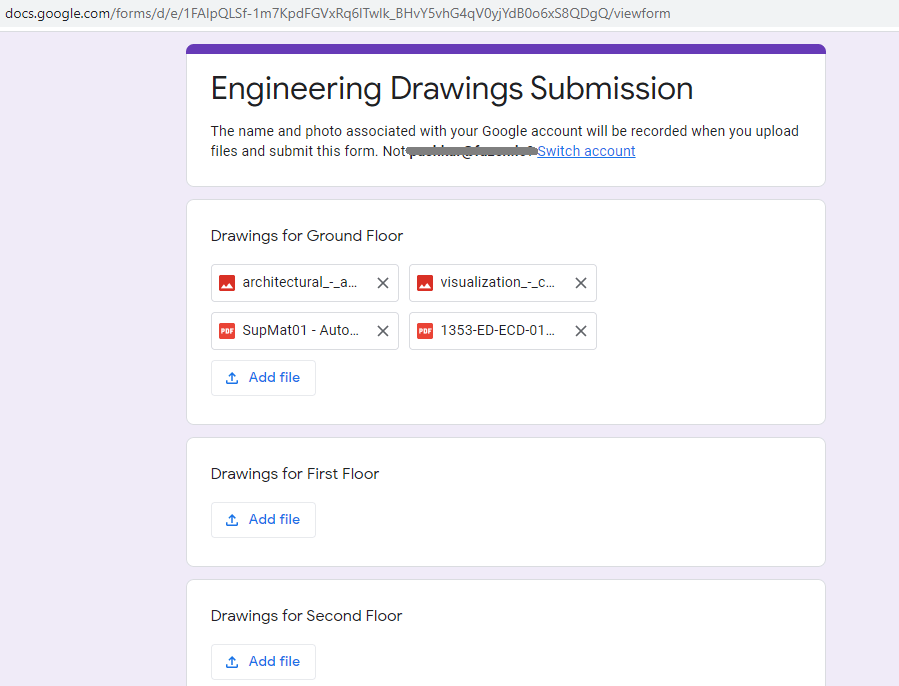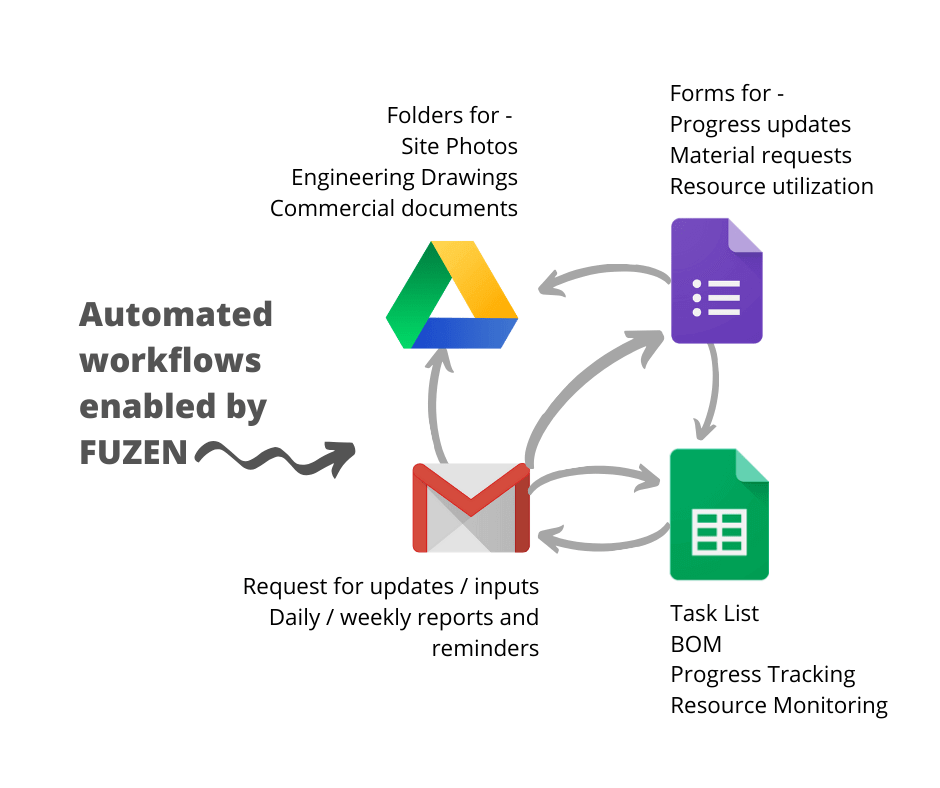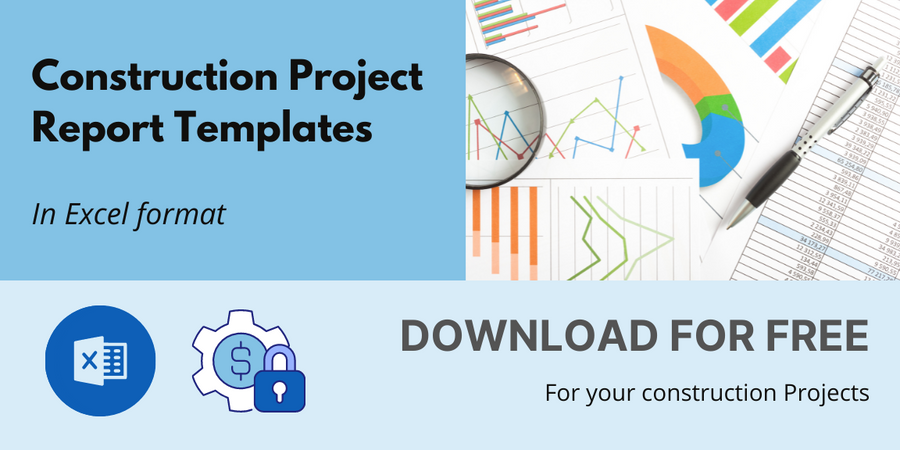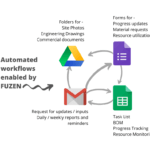Construction projects are quite different in nature than other projects. So they come with a different set of challenges -
- A construction project is commonly executed multiple teams in different locations - engineering, project management, construction, accounting etc.
- Multiple factors and resources need to be tracked in real time - material, labor, logistics, quality
- Any slippage or delay can have a heavy impact on project costs
- The team in the field may not be as IT savvy as the people in office, to be working on complex ERP platforms
How construction progress monitoring typically happens
Before any digital tools, progress monitoring was mostly done manually for construction projects. Then computers and spreadsheets came to be utilized. But these spreadsheets were still quite basic tools in the early days of computers.
Eventually, construction businesses started to look for more sophisticated digital solutions to track the important aspects of their businesses. And the most important part of any business is cash flow.
So accounting and ERP software is among the earliest and most commonly used software tools in the construction industry.
Even today, most finance related aspects are managed using a decade old ERP software packages in most construction companies.
Shortcomings of ERP
Despite its effectiveness in tracking all financial matters, ERP may not be the best suited to track the ground level work in a construction project, because -
- The DNA for most ERP platforms comes from accounting and financial management. That's how they are wired. While that's useful for managing many business processes in the head office, that same structure may fail in much more chaotic and unstructured work environment on a construction site.
- ERP platforms are too heavy to adapt to different site environments for different construction projects. ERPs were originally meant for much more streamlined manufacturing businesses. Where they don't need to be customized on frequent basis. But in the construction business, each project is different. And customizing the ERP platform often can be a big additional project in itself!
- ERPs usually come with complex processes and user interfaces (UIs). These platforms were originally built for accounting teams or business executives from the head office. Accordingly, their user interfaces are also designed for a much more IT savvy user base. But the teams on construction sites may not find the ERPs user friendly. Rather they would prefer to use some simpler mobile based UIs in this day and age.
Which simple tools can be used instead
Because ERP platforms can be too heavy or complex, most construction project teams still manage their work using - emails, spreadsheets and shared folders.
Why? Because they are so very simple to use.
Emails
Despite the availability of messenger tools like slack or Microsoft Teams, email remains the most popular communication channel in construction projects.
- Emails are seen as the most simple, most basic communication channel.
- People are used to it. So they don't have to go through a learning curve associated with any new messenger.
- Most importantly, email communication is widely used as evidence of something being done, for example - reports being submitted, contracts being shared, approval on engineering drawings etc.
- Email approvals are becoming increasingly acceptable instead of a stamp and signature approval.
Spreadsheets
Spreadsheet is one of the earliest digital tools to be accepted in business environments. Even today it is as popular as it ever was. There are good reasons for this seemingly ever lasting popularity.
- Spreadsheets are the most flexible tools available to manage your work related data. Changing the formats, columns, rows, equations is extremely easy with spreadsheets.
- Certain documents like BOQ, budget, material stocks are being managed in spreadsheets since the early days of digital tools. People are very comfortable with those formats. Hence they want to continue using it the same way.
- Data entry is much easier with spreadsheets. When it comes to large construction projects, there are thousands of line items in documents like - BOQ, budget, work breakdown structure, resource lists, punch lists etc. Entering and editing thousands of data points is only made possible by the user friendly UI of spreadsheets.
- Modern spreadsheets are much more capable than simple data storage and editing. You can easily do some statistical operations, data analysis or create insightful charts within a spreadsheet.
Shared Folders
Shared drives were initially limited to the intranet within an office. But over the last few years, online file sharing, cloud based 'storage+collaboration' platforms have become very common.
Documents like engineering drawings, BOQs, purchase orders, work contracts etc. are the backbone of any construction project. Moreover these documents are created, reviewed and approved by different stakeholders. So a lot of collaboration goes into them. Shared folders make it possible to easily collaborate on these document and drawing files.
- Either way - on intranet / internet - shared folders make is incredibly easy to share documents, drawings, reports etc.
- Folder structures are very intuitive and also very familiar to the average user, because of continued usage over the years.
- Popular file storage and sharing platforms - like Google Drive or Dropbox - also allow easy online editing of many file formats. So you don't have to go through the hassle of downloading, editing and then re-uploading the document.
- Online shared folders - like Google Drive or Dropbox - also come with versioning mechanism. So it is much easier to go back to an older version to roll back any unwanted changes to a file.
Online Forms
A typical construction project is executed by a team scattered across different locations and business functions - engineering design, purchase, site workers, sub-contractors, project managers etc.
They need to regularly share a lot of information with each other. Emails and shared folders enable that to certain extent. But emails and folders are not well structured channels for gathering inputs.
For example, when a bunch of engineering drawings are sent in an email or put in a folder, someone will need to personally read each file to check which floor or area that drawing belongs to.
But if they are submitted via a form which has different file upload fields for different floors, the structuring or filing organization is automatically achieved.

- Forms have not been very common in the past. But Google forms have made it easier to create and share online forms.
- Google forms are also very mobile friendly, making it possible to easily gather inputs from people on site or in stores, who are not always connected to a computer.
- Most importantly forms make it possible to gather information in a more structured way, making it much easier to be managed in spreadsheets or to be searched from a dashboard.
Automation workflows to connect construction progress monitoring tools
The simplicity of emails and spreadsheets makes them very effective for work management at individual level. But that may not scale up well for progress monitoring at the project level. This is primarily due to the disconnected nature of these tools.
Emails, spreadsheets, shared folders work very well on their own. But since they are not directly connected to each other, there is no easy way to capture the information in an email and put it in a spreadsheet. Someone has to manually do it.
For example, you send the work order for a painting job to the subcontractor in an email. But then you need to go to the cost tracking spreadsheet and once again enter the subcontractor details, job value, start date, order no etc. manually in that spreadsheet.
In summary, the disconnected nature of these simple tools causes a lot of manual rework, bringing down the overall efficiency of your project team.
But if you connect these same tools with automated workflows, that will create a user friendly yet highly efficient system for monitoring progress in construction projects.
Let's see how we can do that.
Using Fuzen for progress monitoring automation in construction projects
Fuzen.io is a dedicated platform for connecting your simple work management tools with customized workflows. You can use fuzen to connect your Gmail, Google spreadsheets, Google Drive folders and Google forms to create a well integrated, automated construction progress monitoring solution.

In fact, we have a solution template that you can install within your Google Drive with a single click. This template comes with default progress monitoring workflows for construction projects.
These workflows are 100% flexible. We can customize them to exactly fit into your established work practices. With Fuzen, you can turn your Google Drive account into a full fledged construction project management solution.
You can try it out for free and then buy it only if you find it useful.

Pushkar is a seasoned SaaS entrepreneur. A graduate from IIT Bombay, Pushkar has been building and scaling SaaS / micro SaaS ventures since early 2010s. When he witnesses the struggle of non technical micro SaaS entrepreneurs first hand, he decided to build Fuzen as a nocode solution to help these micro SaaS builders.





